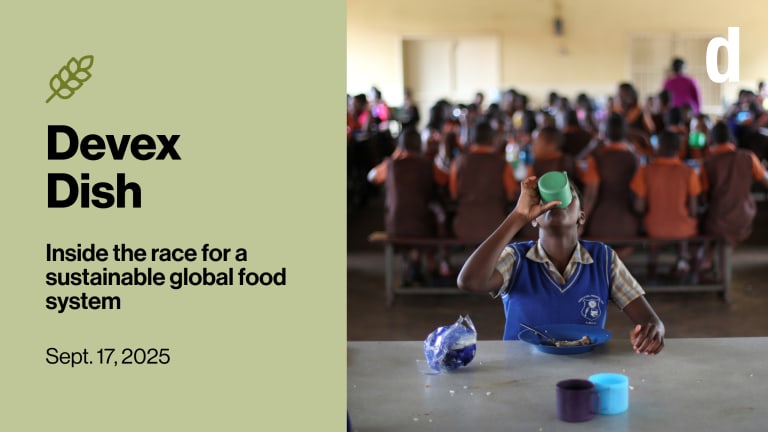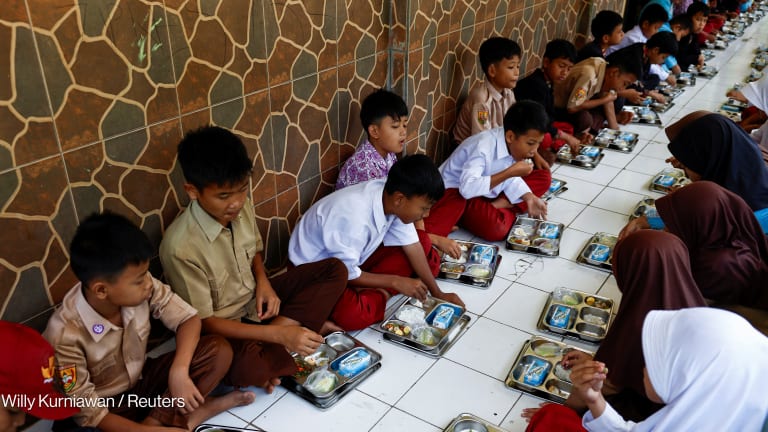Abraha Bahlbi lays an enormous paper ledger over bags of ready-to-eat Famix blended food in the storeroom at Ara Primary School in southeastern Tigray, Ethiopia. The Mary’s Meals International, or MMI, school feeding coordinator points to the columns and rows, and explains how cooks measure exactly 100 grams a day of the nutrition-fortified porridge for each student. The daily total distributed is deducted from the amount in stock, and the new balance used to calculate next month’s food delivery.
But what Bahlbi points to most furtively is the column showing school attendance. MMI began a school feeding program at Ara in March this year. By May, enrollment jumped from 380 to 453 children. “The daily attendance rate is about 98%,” he said. “It is a sign of the high need and importance the meal is playing that the children are coming every single day.”
About 57% of Tigray’s school population has dropped out of school as a result of conflict and drought, according to Tigray’s Education Bureau. On a visit to the region, Devex learned that school-based feeding is a vital and cheap solution to get children back into classrooms and tackle hunger. But only a handful of organizations are responding. With levels of need this critically high, why are so few involved?








